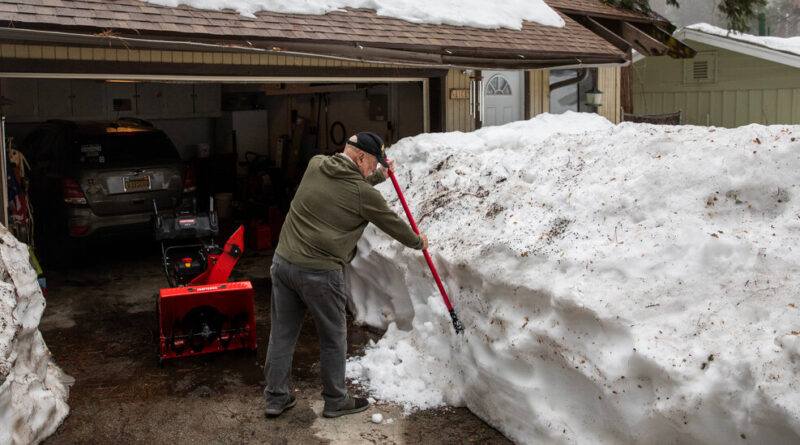NOAA Forecasters See a Respite for California
[ad_1]
The News
Weather forecasters with the National Oceanic and Atmospheric Administration on Thursday issued their latest outlook for the United States, and there’s at least one piece of hopeful news for a state that has already had a wild year, weather-wise: California.
The gargantuan piles of snow that this winter’s powerful storms left in the Sierra Nevada have prompted concerns about the flooding that could result when all that frozen water starts to melt and head downhill.
But according to NOAA’s latest forecasts, temperatures for May through July are highly likely to be in line with historical averages across California and Nevada. For May, much of California could even see cooler-than-normal conditions, the agency said. This could mean the snow’s melting would be more gradual than abrupt, more beneficial to water supplies than destructive to homes and farms.
“The picture is relatively optimistic compared to what it could be,” said Andrew Schwartz, lead scientist at the Central Sierra Snow Laboratory, part of the University of California, Berkeley.
“We’re not seeing any very warm periods that would cause concern to us yet,” he said. “And the hope is that when we do see those — or if we do see those — that they will be later in the season, when the snowpack isn’t quite as large.”
The Bigger Picture
Global weather patterns are in the middle of a big transition. For the past three years, La Niña conditions have prevailed over the Pacific Ocean, which has helped bring drier, warmer weather to the southern half of the United States. Now, this all-important factor in climate worldwide is shifting to its opposite phase: El Niño.
According to NOAA’s latest forecasts, there is a greater than 60 percent chance that El Niño will develop between May and July. The likelihood that it will form between August and October is greater than 80 percent.
This shift means different things for different places, but on the whole, scientists expect the arrival of El Niño to herald higher global temperatures. La Niña had been providing a cooling offset to the steady warming of the planet caused by greenhouse-gas emissions. But even that was not enough to stop many parts of the world from experiencing near-record warmth in recent years.
Europe, for instance, had its second-warmest year on record in 2022. Worldwide, across land and sea, last month was the second-warmest March since records began in 1850, NOAA said on Thursday. Sea ice coverage around both poles in March was the second lowest since records began in 1979.
What’s Next
Between May and July, NOAA expects temperatures to be above normal across a large swath of the eastern and southern United States, particularly along the Gulf and Atlantic Coasts. The weather is poised to be wetter than average in the Southeast.
With conditions over the Pacific in a “neutral” state, meaning neither El Niño nor La Niña is occurring, there is a wider-than-normal range of possible conditions that could materialize, said Scott Handel, a meteorologist with the NOAA Climate Prediction Center.
“In general, there’s more uncertainty than usual in the precipitation outlook across much of the country,” he said.
[ad_2]
Source link


